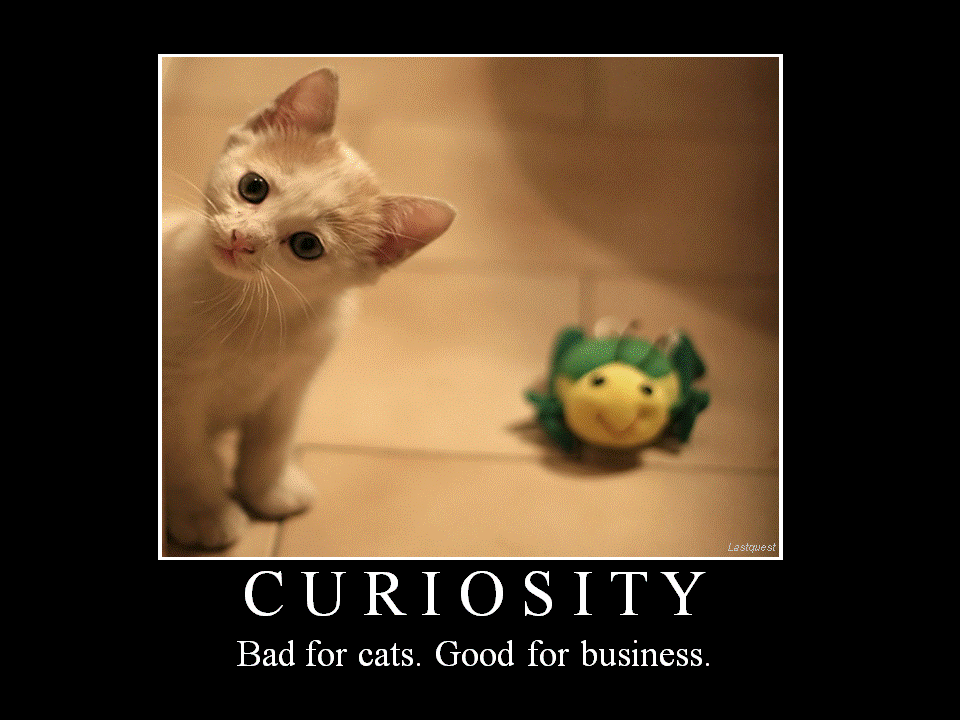 Well, hats off to NASA and their partners for pulling off an amazing feat of project planning, innovation, technological wizardry and collaboration. That MARDI video was quite something. Curiosity has landed – let’s see what it finds.
I’ve been reflecting on the topic of curiosity recently, and in fact it even made it onto the cover of my most recent brochure!
Well, hats off to NASA and their partners for pulling off an amazing feat of project planning, innovation, technological wizardry and collaboration. That MARDI video was quite something. Curiosity has landed – let’s see what it finds.
I’ve been reflecting on the topic of curiosity recently, and in fact it even made it onto the cover of my most recent brochure!
In many respects, it is curiosity which closes the learning loop. We can invest vast amounts of effort in learning, reviewing and capturing (when we don’t have an immediate customer to transfer newly generated knowledge to) – but if nobody is curious enough to want to learn from the experience of others, then there is no demand - and no marketplace for knowledge exchange.
That’s why Thomas Friedman wrote about the importance of the “Curiosity Quotient”, created the equation: CQ + PQ > IQ (PQ is Passion Quotient) and wrote:
“I have concluded that in a flat world, IQ- Intelligence Quotient – still matters, but CQ and PQ – Curioity Quotient and Passion Quotient – matter even more. I live by the equation CQ+PQ>IQ. Give me a kid with a passion to learn and a curiosity to discover and I will take him or her over a less passionate kid with a high IQ every day of the week.”
As we look to make our organisations more effective in their use of knowledge, let's keep one eye on how we can increase the levels of curiosity. We can do this through any number of means: leadership encouragement and open questions, raising the levels of awareness of projects and activities, curation, gaming, social serendipity, thinking out loud, peer challenge and peer assistance, overcoming "not-invented-here" and making our organisations a safe place to ask for (and receive) help.
If we could accomplish more of this, then who knows what new life we might discover in KM?
